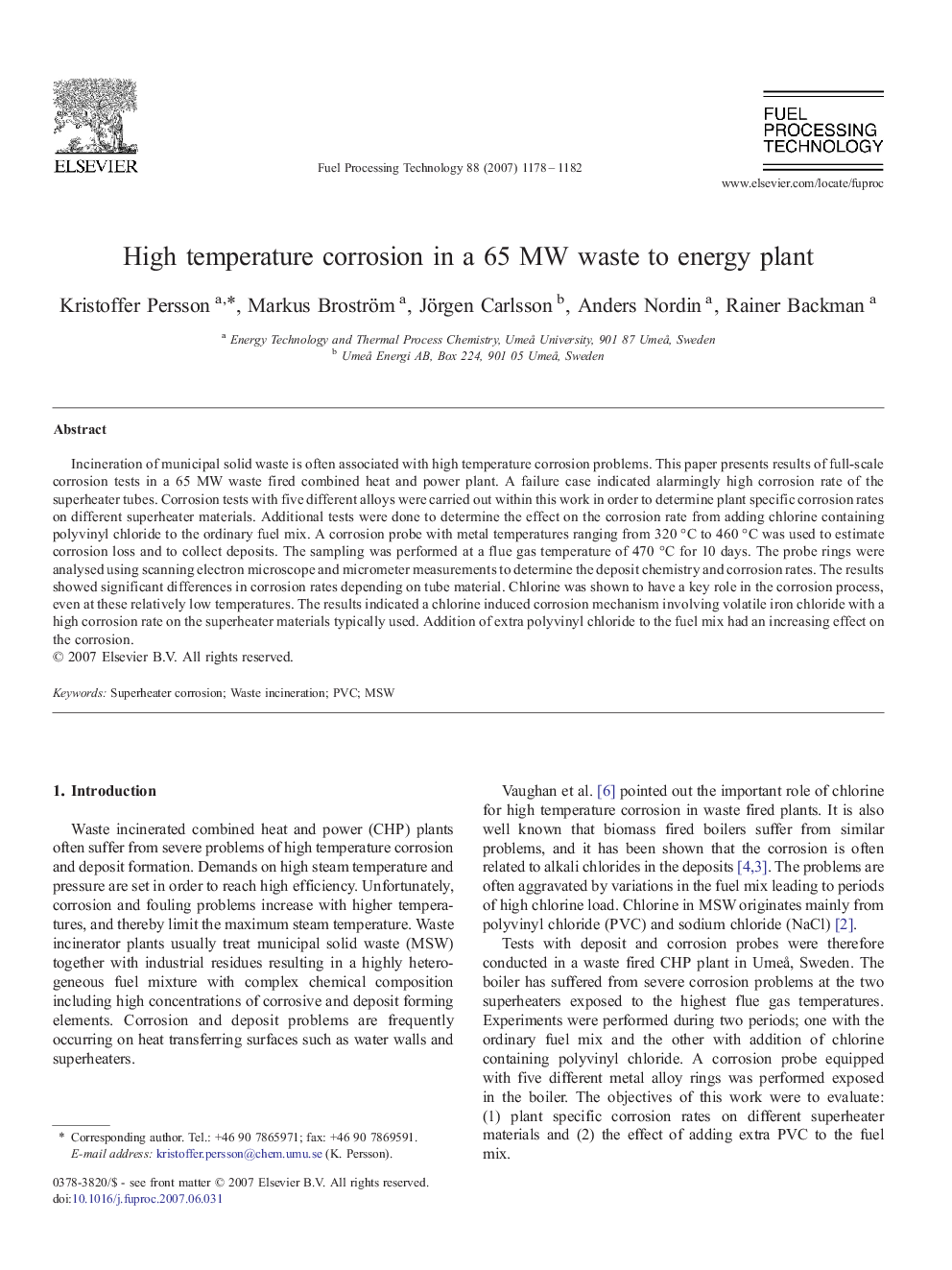| Article ID | Journal | Published Year | Pages | File Type |
|---|---|---|---|---|
| 211272 | Fuel Processing Technology | 2007 | 5 Pages |
Incineration of municipal solid waste is often associated with high temperature corrosion problems. This paper presents results of full-scale corrosion tests in a 65 MW waste fired combined heat and power plant. A failure case indicated alarmingly high corrosion rate of the superheater tubes. Corrosion tests with five different alloys were carried out within this work in order to determine plant specific corrosion rates on different superheater materials. Additional tests were done to determine the effect on the corrosion rate from adding chlorine containing polyvinyl chloride to the ordinary fuel mix. A corrosion probe with metal temperatures ranging from 320 °C to 460 °C was used to estimate corrosion loss and to collect deposits. The sampling was performed at a flue gas temperature of 470 °C for 10 days. The probe rings were analysed using scanning electron microscope and micrometer measurements to determine the deposit chemistry and corrosion rates. The results showed significant differences in corrosion rates depending on tube material. Chlorine was shown to have a key role in the corrosion process, even at these relatively low temperatures. The results indicated a chlorine induced corrosion mechanism involving volatile iron chloride with a high corrosion rate on the superheater materials typically used. Addition of extra polyvinyl chloride to the fuel mix had an increasing effect on the corrosion.
